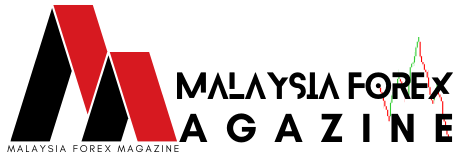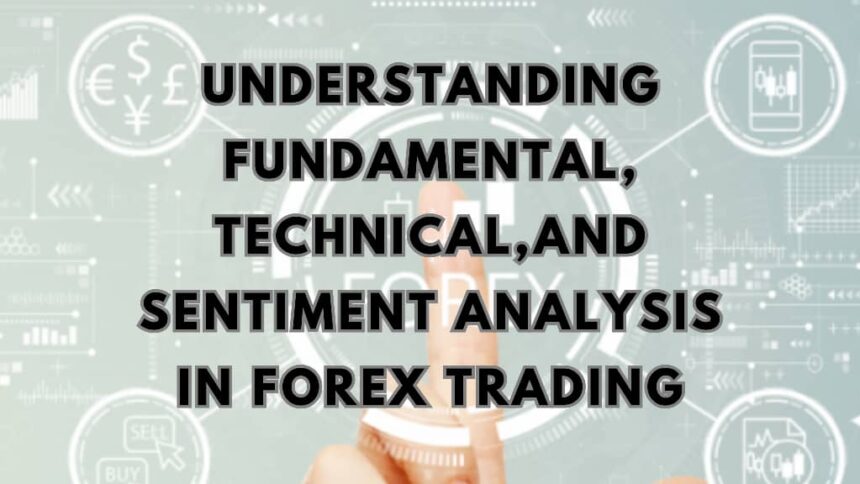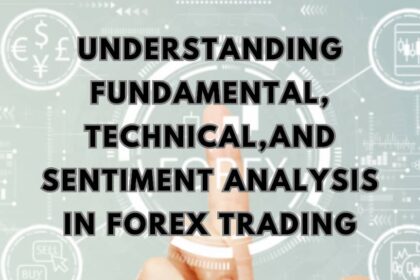In the dynamic world of forex trading, successful traders employ a variety of analysis methods to make informed decisions and navigate the complexities of the foreign exchange markets. Among the most commonly utilized approaches are fundamental analysis, technical analysis, and sentiment analysis. Each method offers unique insights into market dynamics and price movements, catering to different trading styles and objectives.
Fundamental Analysis:
Fundamental analysis involves evaluating the intrinsic value of currencies by examining economic indicators, geopolitical events, and macroeconomic factors that influence supply and demand. Key elements of fundamental analysis include:
- Economic Indicators: Traders scrutinize economic data such as GDP growth, inflation rates, employment figures, and trade balances to assess the health and direction of an economy. Positive economic indicators typically lead to a stronger currency, while negative data can weaken it.
- Monetary Policy: Central bank policies, including interest rate decisions, quantitative easing programs, and forward guidance, play a significant role in shaping currency values. Traders closely monitor central bank statements and policy meetings for insights into future monetary policy actions.
- Geopolitical Events: Political instability, trade tensions, and geopolitical conflicts can impact currency markets by altering investor sentiment and risk appetite. Traders assess geopolitical developments to gauge potential market reactions and adjust their trading strategies accordingly.
Technical Analysis:
Technical analysis focuses on studying historical price patterns, market trends, and chart formations to forecast future price movements. Key components of technical analysis include:
- Price Charts: Traders analyze price charts using various tools and indicators such as moving averages, trend lines, support and resistance levels, and chart patterns like head and shoulders or double tops/bottoms. These tools help identify potential entry and exit points based on past price behavior.
- Volume Analysis: Volume data provides insights into market participation and the strength of price movements. Traders use volume analysis to confirm price trends, detect potential reversals, and assess market liquidity.
- Technical Indicators: Oscillators, momentum indicators, and other technical studies help traders identify overbought or oversold conditions, divergence between price and momentum, and potential trend reversals. Popular technical indicators include the Relative Strength Index (RSI), Moving Average Convergence Divergence (MACD), and Stochastic Oscillator.
Sentiment Analysis:
Sentiment analysis involves assessing market sentiment, investor psychology, and positioning to gauge market sentiment can be measured through various methods, including:
- Market Sentiment Indicators: Sentiment indicators track the collective mood of market participants through metrics such as the Commitment of Traders (COT) report, which provides insights into the positioning of institutional traders in the futures market.
- News and Social Media Analysis: Traders monitor news headlines, social media chatter, and sentiment analysis tools to gauge market sentiment in real-time. Positive or negative news can influence trader sentiment and market dynamics, impacting currency prices.
- Risk Appetite: Changes in risk appetite influence currency markets, with safe-haven currencies like the US dollar and Japanese yen gaining during periods of market uncertainty, while higher-yielding currencies may appreciate during risk-on sentiment.
Conclusion:
In summary, fundamental, technical, and sentiment analysis are essential tools used by forex traders to interpret market dynamics, forecast price movements, and make informed trading decisions. While each approach offers unique insights into market behavior, successful traders often employ a combination of these methods to gain a comprehensive understanding of the forex markets and enhance their trading strategies. By integrating fundamental analysis to understand underlying economic drivers, technical analysis to identify price trends and patterns, and sentiment analysis to gauge market sentiment and positioning, traders can develop a well-rounded approach to navigating the complexities of the forex markets and achieving their trading objectives.











